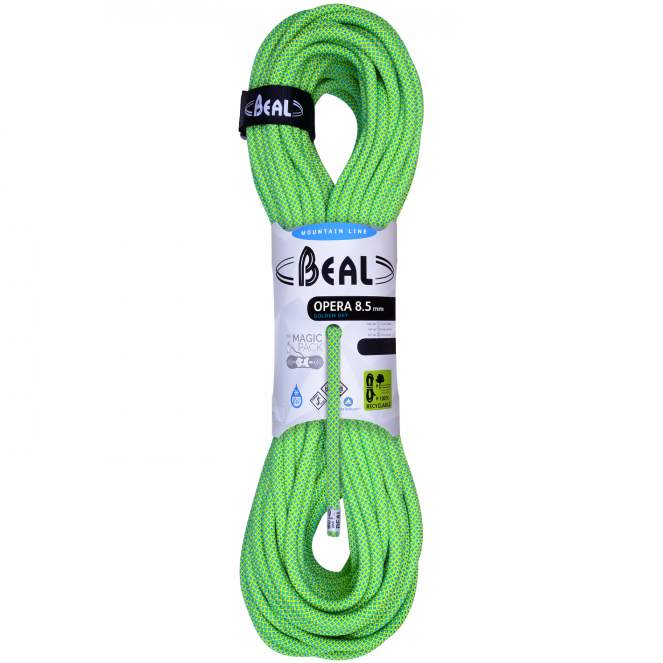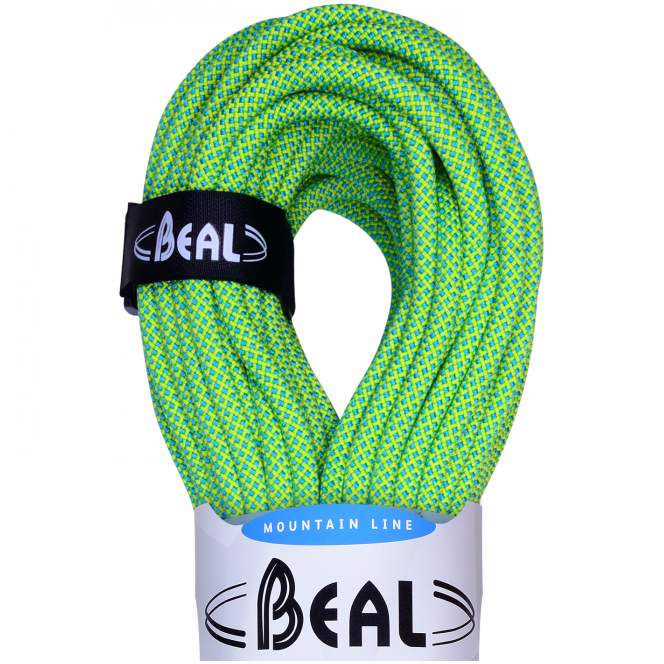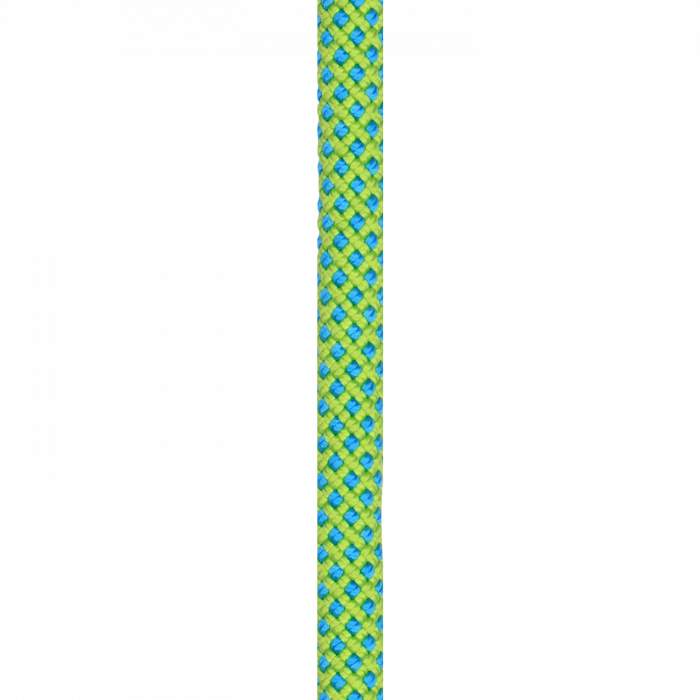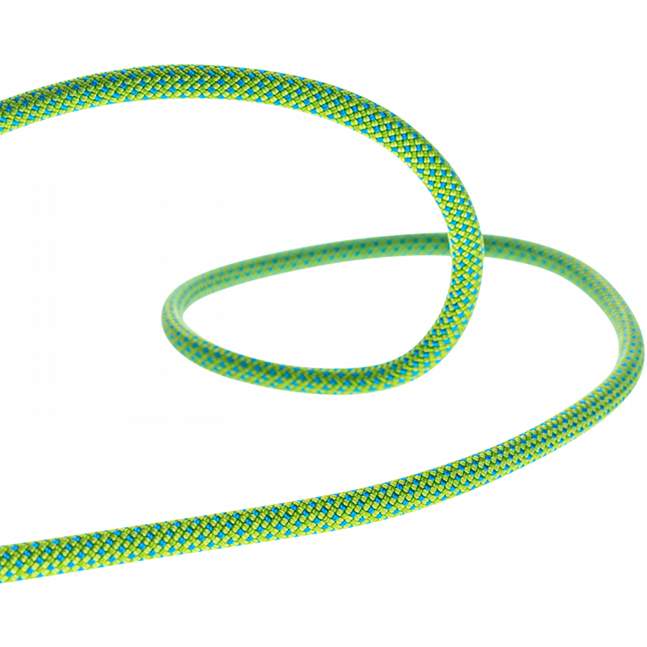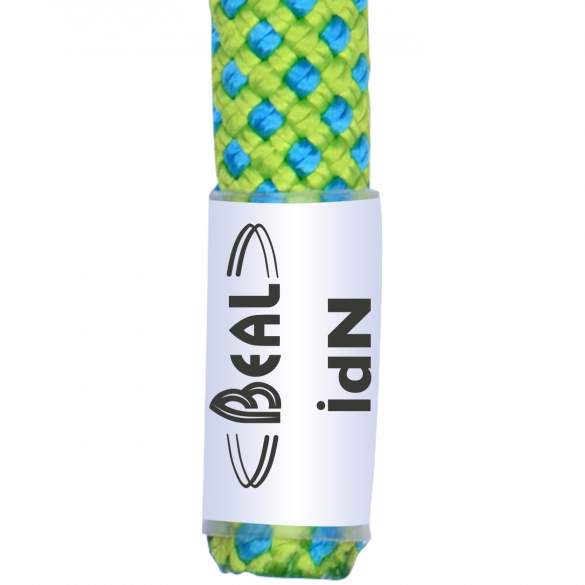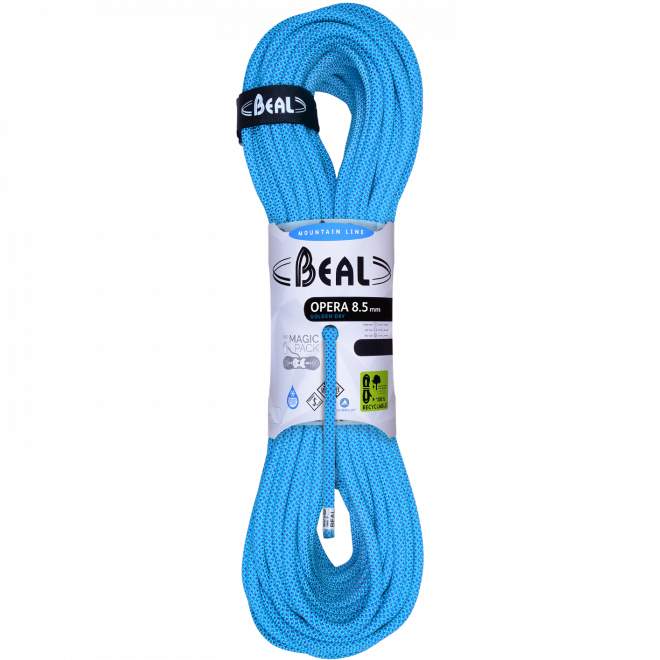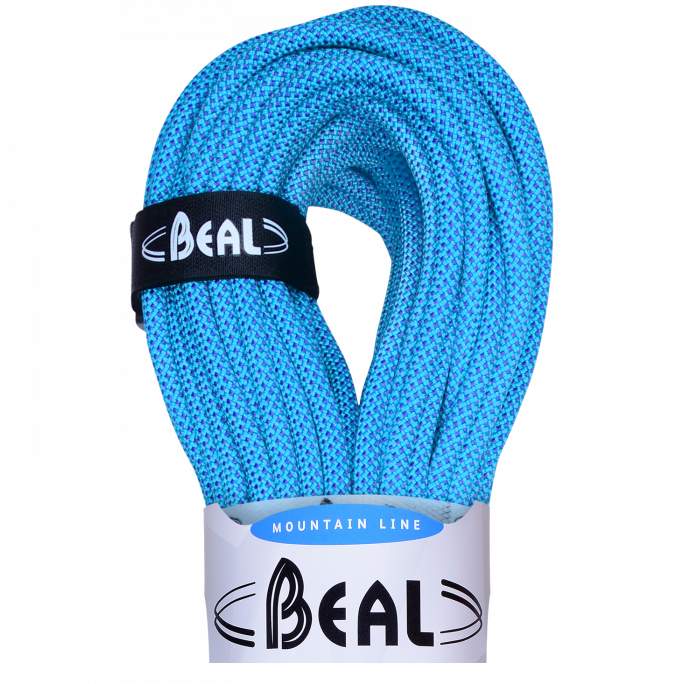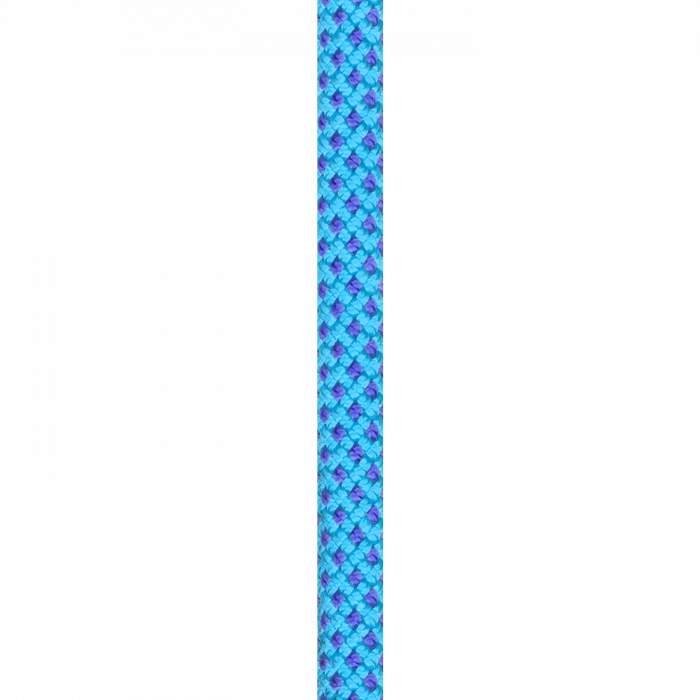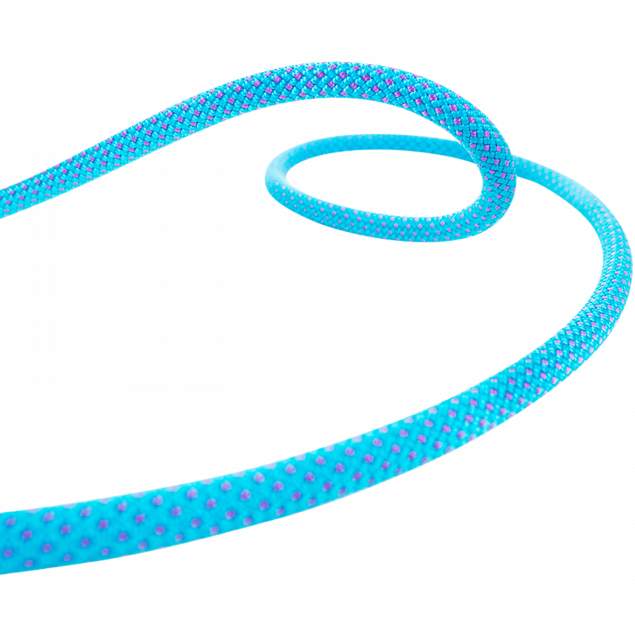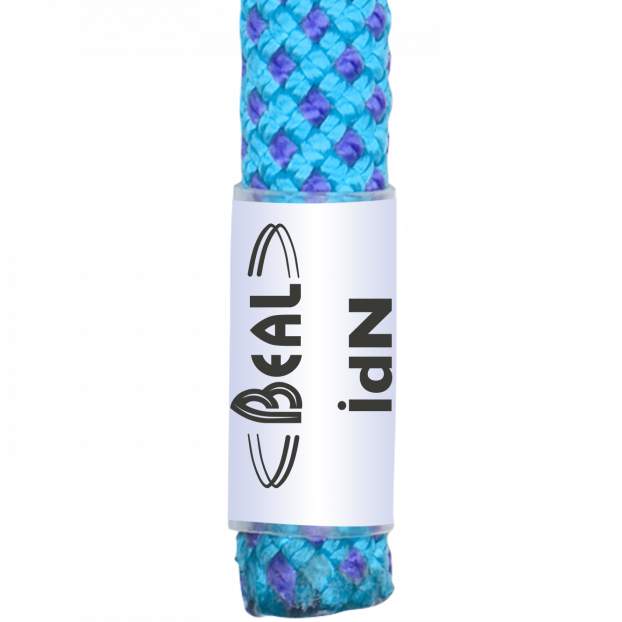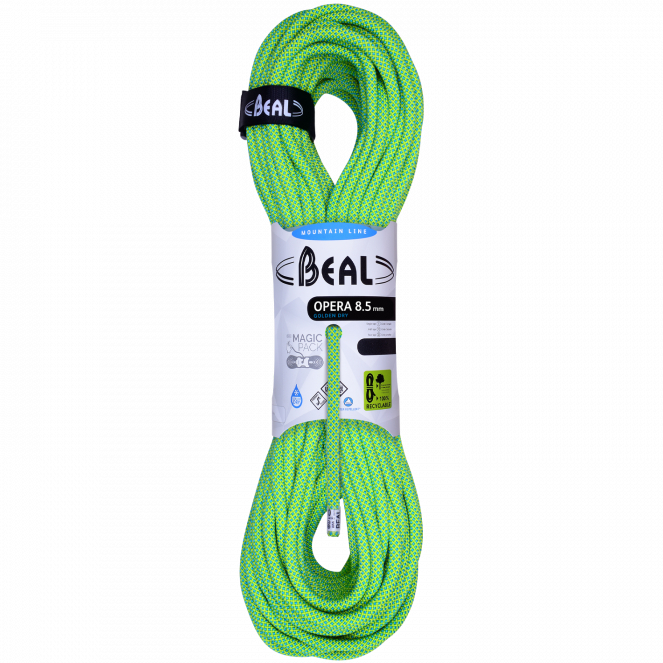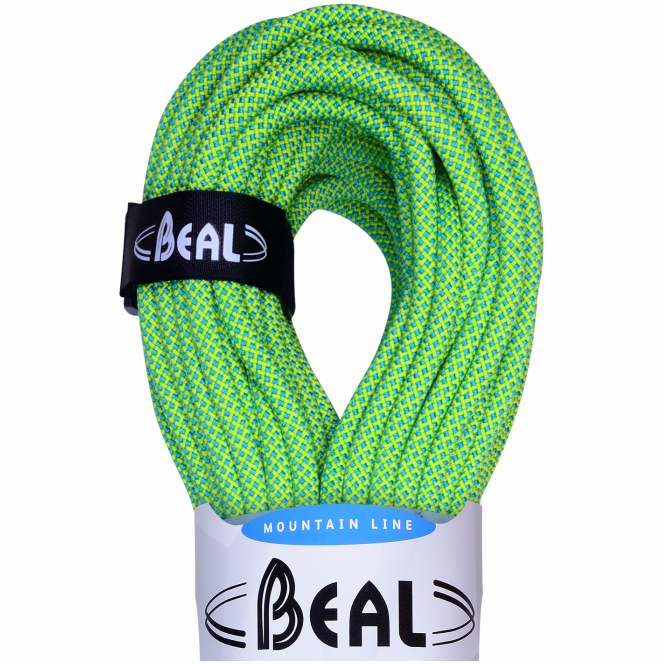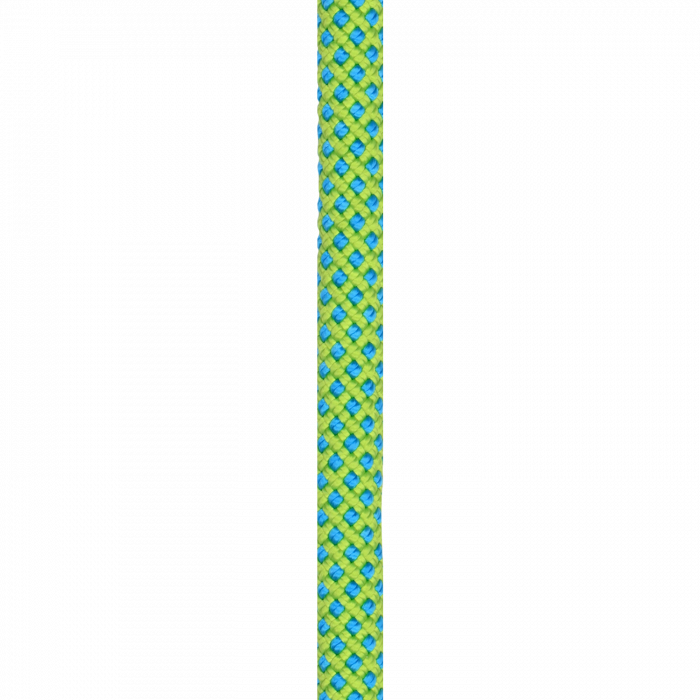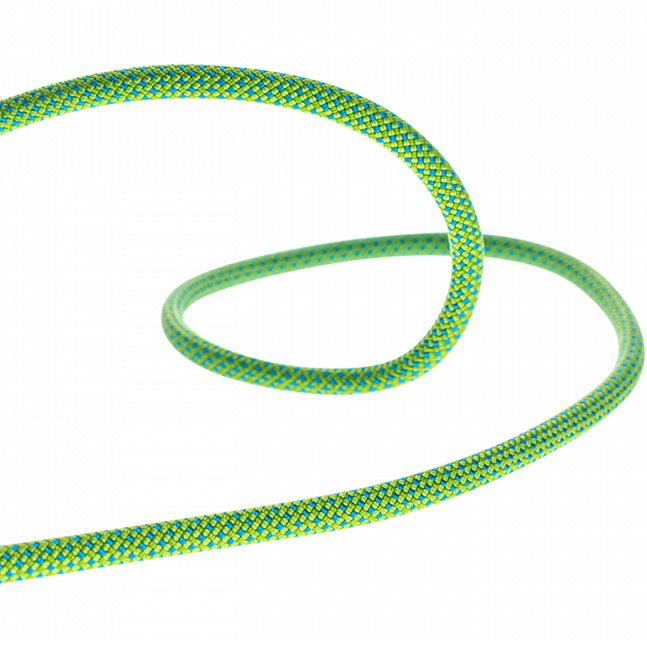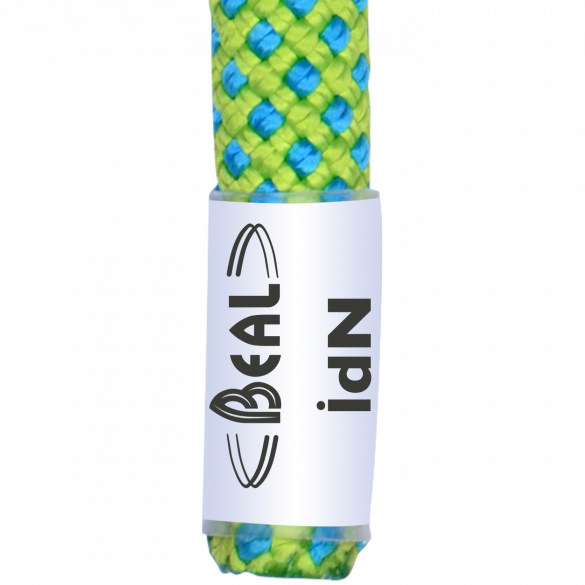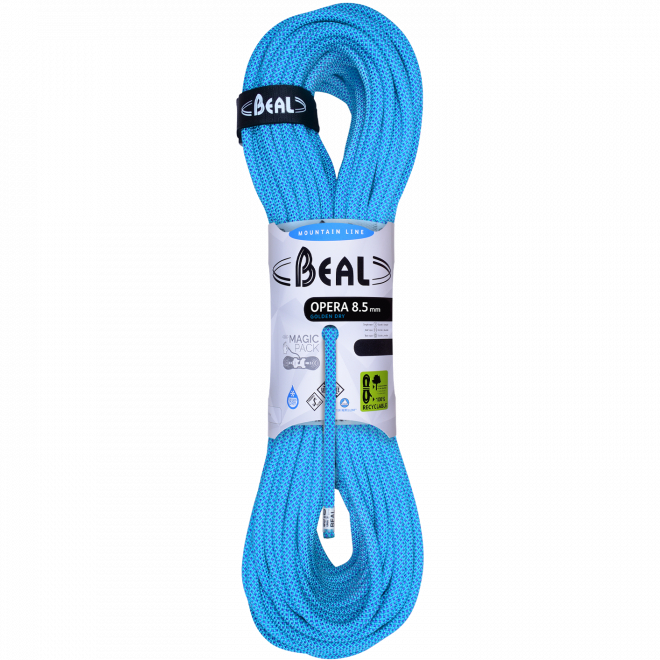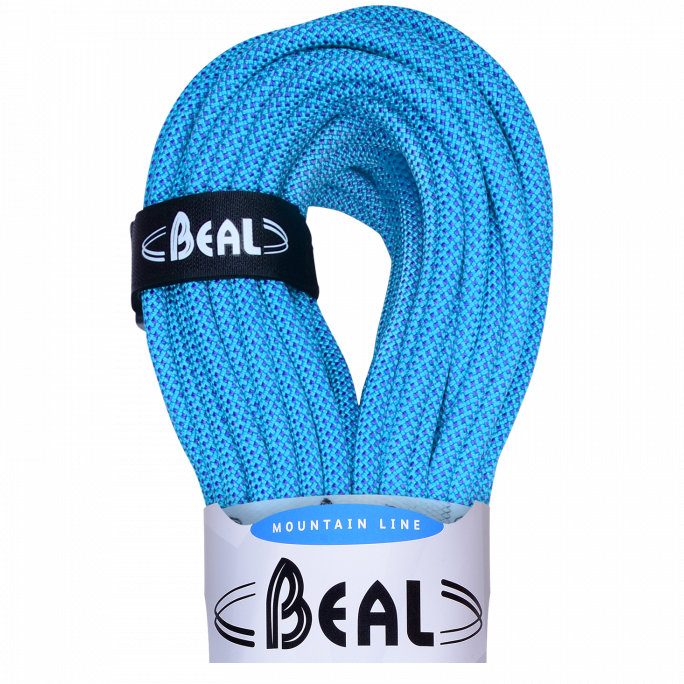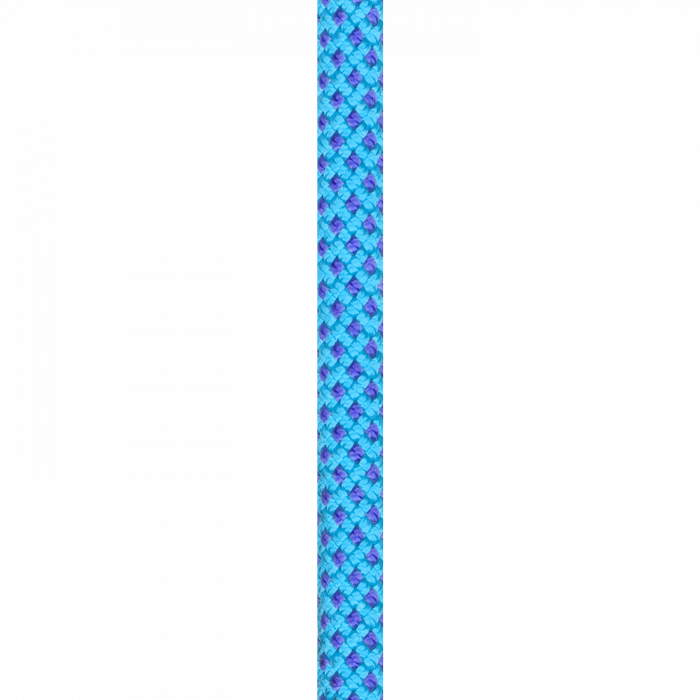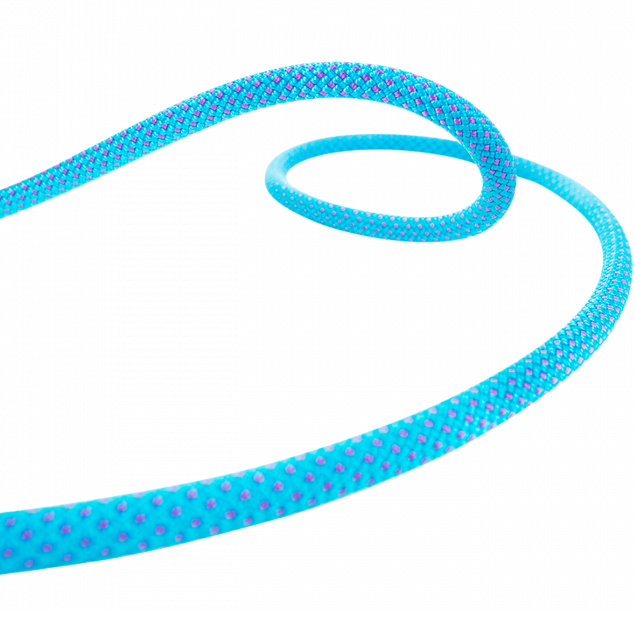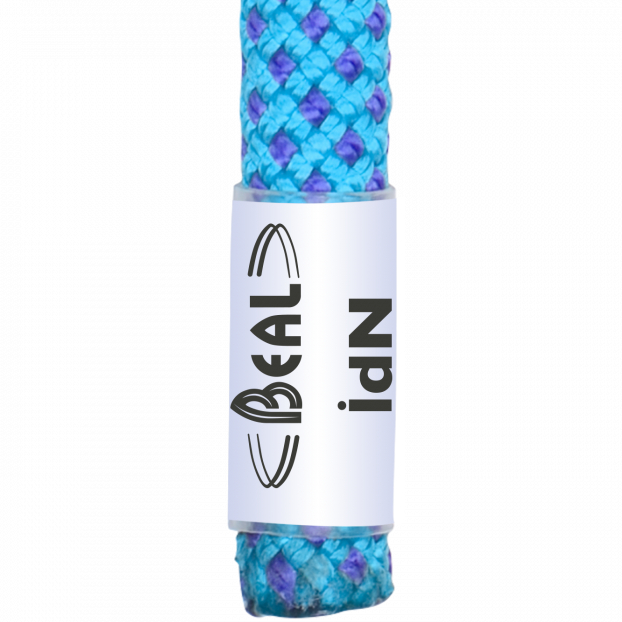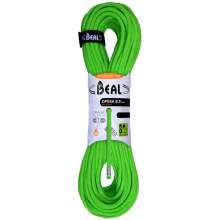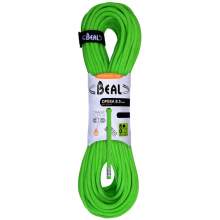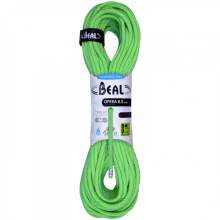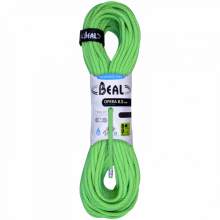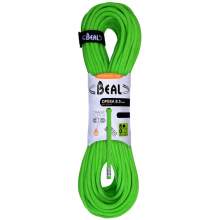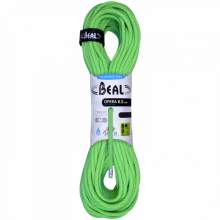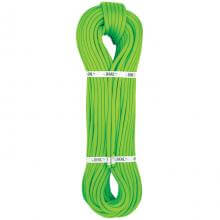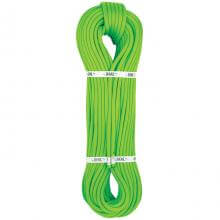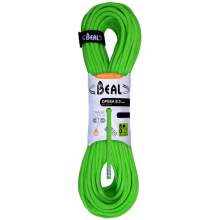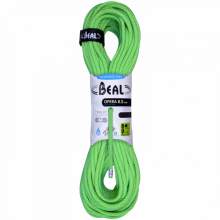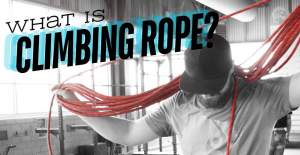How to use 8.5mm Opera correctly, precautions, lifetime, care and maintenance with instructional pictures.
8.5mm Opera Unicore 50m 2xDry
Description
Weighing in at only 48 g per meter, the Opera 8.5 is the first sub 50g rope and is the lightest and thinest single rope on the market. The rope is made with technology that combines all of Béal's know-how, resulting in low impact forces, UNICORE technology, DRY COVER protection and the UIAA Water Rellent standard for the GOLDEN DRY version.
This ultra-supple, ultralight rope will please the most demanding sport climbers while remaining versatile for mountaineering.
STRONG POINTS:
• Ultralight.
• Ultra supple.
• Versatile.
• Offers all the advantages
of UNICORE technology.
Retail price
When you click a link below and then checkout online, no matter what you buy (climbing gear or not), we get a small commission that helps us keep this site up-to-date. Thanks!



| Weight | 48.0 g/m 5.291 lbs / 2400 g |
| Diameter (millimeters) | 8.5 mm |
| Length (meters) | 50 m |
Rope Type  Type
There are 3 types of dynamic ropes that are used by climbers. They are known as Single, Half (Double), and Twin. The type of rope preferred varies by climbing style, location, and region. Single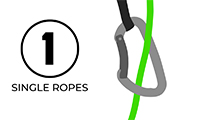
By far, the most common type of rope. Great for indoors and out. In the US, it is the most common sport and big wall and are also used for trad cragging. The handling is simple and the diameter options are quite varied. Half (Double)
The best cure for a meandering route, only one of the ropes will clip into each piece of protection so a mindful climber can can reduce rope drag considerably. You can also rappel twice the distance, it’s easier to safely protect traverse pitches and there is a smaller chance that both ropes would become damaged (by rockfall, crampons, etc). Twin
Both ropes must be clipped through each piece of protection. This is the lightest style of (two) ropes. They excel for rappels, going twice the distance vs a single rope, but do not have the ability to mitigate rope drag even though there are two ropes. It is unlikely both ropes will be damaged at once, and is why many alpine, ice and mixed climbers choose twin and/or half ropes. Learn More
Every rope type and when to use them | Single/Half/Twin |
UIAA Falls (Single / Half / Twin)  UIAA FallsThis refers to the number of UIAA falls a rope has been tested to be able to withstand without breaking. The UIAA fall is a complicated test that is designed to create a uniform standard for strength in ropes, and is not generally reflective of real-world climbing situations. The test involves dropping a weight tied to the rope in such a way that it will see the highest amount of force a real-world situation could generate. The UIAA requires that Single and Half ropes must pass this test without breaking at least 5 times, while twin ropes must withstand 12 falls. In practice, it can likely be concluded that ropes that have higher than this standard number of falls will be stronger and put up with more abuse. It is important to note that any rope that is UIAA or EN certified is considered safe to climb on, regardless of the number of UIAA falls it is rated for. | 5 falls / 18 falls / 25 falls |
Dynamic Elongation (Single / Half / Twin)  Dynamic ElongationThis refers to the amount of stretch measured during the dynamic testing (or drop test) used when certifying ropes. Higher stretch will absorb more force and result in a softer catch but increases chances of groundfall at the beginning of a climb. The EN and UIAA require a stretch of at least 10% and no more than 40% for dynamic ropes. Single and Half ropes are tested individually and Twin ropes are tested as a pair. | 37.0 % / 32.0 % / 29.0 % |
Static Elongation (Single / Half / Twin)  Static ElongationThis refers to the amount of stretch measured during the static test used when certifying ropes. Most climbers will notice the difference in static elongation when climbing in a top rope situation, where higher stretch will make for a springier belay and could result in a ground fall when climbing closer to the ground. The EN and UIAA require a stretch of no more than 10% for Single and Twin ropes and no more than 12% for Half ropes. Single and Half ropes are tested individually and Twin ropes are tested as a pair. | 8.4 % / 8.4 % / 5.1 % |
Impact Force (Single / Half / Twin)  Impact ForceImpact force is the amount of force in kN that is measured at the testing mass during the UIAA dynamic drop rope test. When the weight is dropped, the force measured must be at or below 12kN for Single and Twin ropes and 8kN for Half ropes. The real world application of this test is determining that the rope can dissipate and absorb the appropriate amount of force from the fall as it would be felt by the climber. The variables used in the test set a situation that is well beyond anything climbers encounter, and shouldn't be considered realistic to actual climbing situations. In reality forces of this magnitude would result in severe injury as this test is designed to test the limits of the rope and not the comfort of the climber. | 7.40 kN / 5.50 kN / 8.80 kN |
Dry Treatment  Dry TreatmentWhen a rope is dry treated, it has had a coating applied to its core fibers, its sheath fibers, or both. The purpose of this coating is to reduce the amount of water the rope can absorb when in wet or icy conditions. Wet ropes are heavier, handle and belay differently, and have been tested to be weaker than dry ropes. Many climbers prefer dry treated ropes for very dusty or dirty environments, as they are more resistant to uptake of dirt and can stay cleaner longer. Learn More
Benefits of Dry vs Non-Dry ropes | Sheath & Core UIAA Certified Dry (aka Golden Dry) |
| Sheath Proportion (%) | 39.0 % |
| Sheath Slippage (mm) | 0 mm |
| Type of Middle Mark | None |
| Rope End Marker | None |
| Certification | CE, EN, UIAA |
RFID / NFC Option  RFID and NCFThis technology can be helpful if you are a gym or professional business where you'd like to track the usage and age of your ropes. RFID is how items are uniquely identified using radio waves (Radio Frequency Identification). It's for 1-way communication from 10cm to 100m away depending on the frequency. Example: Airport Baggage. NFC is a subset of RFID that is restrained to close proximity communication typically less than 10cm (Near Field Communication). NFC chips can operate a 2-way signal to exchange information. Example: Apple Pay. | None |
No reviews yet.
After testing the Opera at the crags of Index, Washington, I embarked on a seven-week road trip in the Cascades, the Sawtooths and the Wind River Range. Before I took the rope into the mountains to try some technical and difficult alpine routes, I had my partner yank out the slack from the Grigri to simulate a lead fall, just to make sure the device locked up well enough on the thin rope. It passed the test. With a newfound confidence, we then hiked up to cast away on a sea of alpine granite. The rope was whipped on, rappelled on, and saw action on hundreds of difficult pitches, all the while showing little to no wear.
Touted as the lightest single rope in the world, the Opera 8.5 weighs in at a mind-bending 48 g/m—that’s 7.4 lbs. for the 70-meter version. Rated as a single, half, and twin, its uses are endless, and our testers “took this rope for multi-pitch alpine to ice toproping to redpoints of mixed routes.” We don’t recommend making this your workhorse cord, but it stands out for alpine with its airy weight and incredible UIAA-certified Golden Dry treatment. “After full days in Ouray’s Box Canyon getting clobbered by falling ice and dipping into the river, the Opera was still bone-dry at the end.” Plus, Unicore keeps the core protected if the sheath gets cut.
The Beal Opera is a versatile rope that provides alpine enthusiasts with the ability to simply carry less weight without sacrificing the safety margin provided by a UIAA single rating. It can be carried alone for single use on ice and rock climbs, or as a set of burly double ropes on wandering routes or routes that require 60+ meter rappels. The slinky Opera is not designed to take the abuse of repeated sport whipping or excessive top-roping, but you can use it with confidence on redpoint burns or classic climbs in the mountains, knowing that you are only cutting weight, not safety.
This video explains all the features of 8.5mm Opera.

